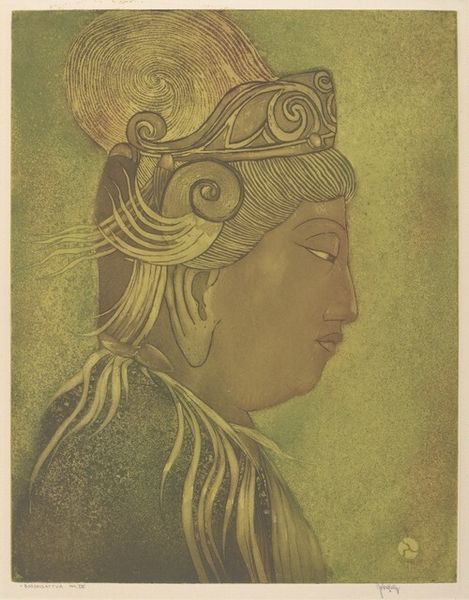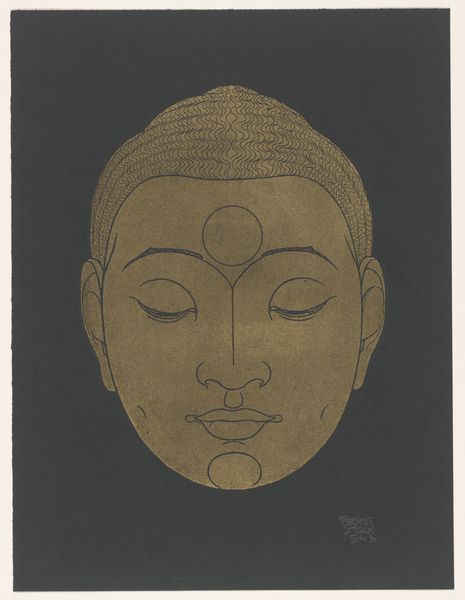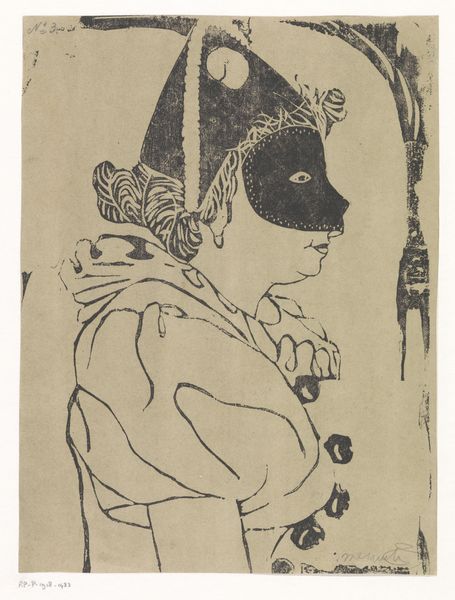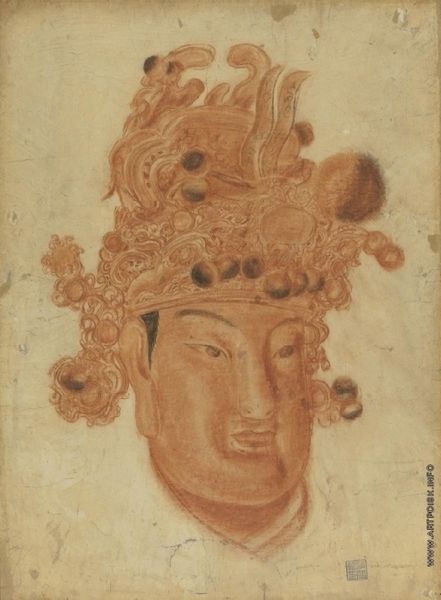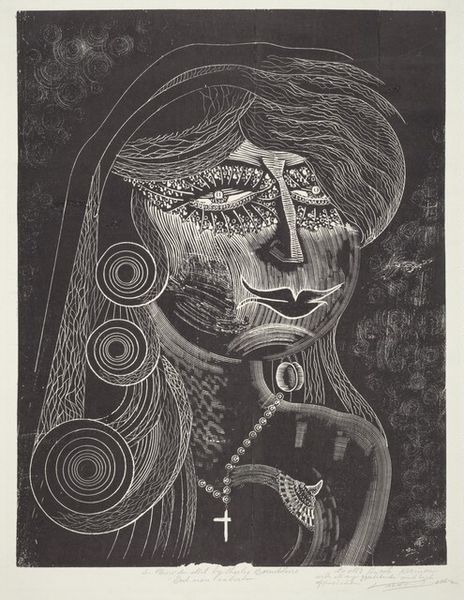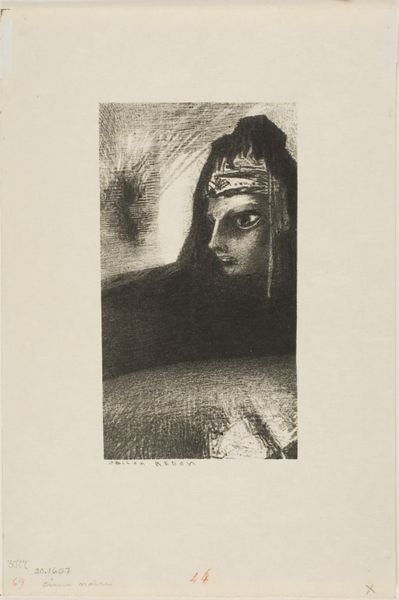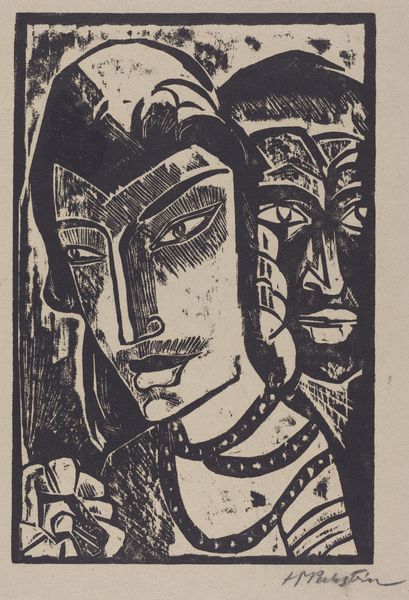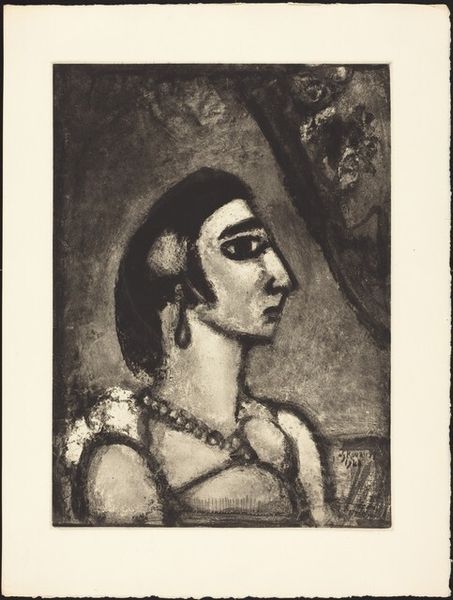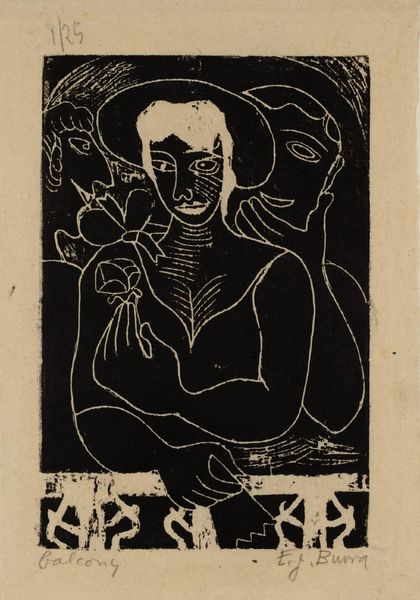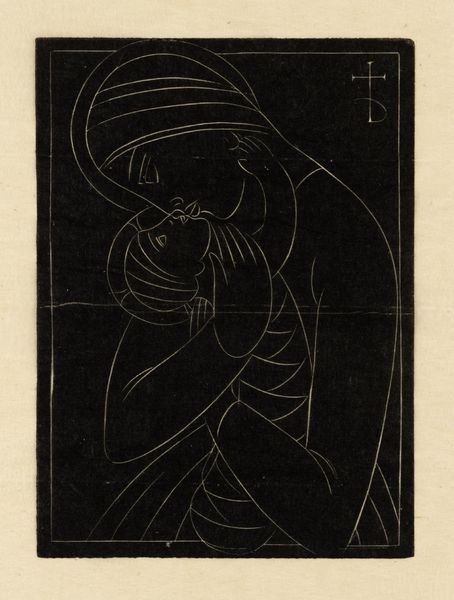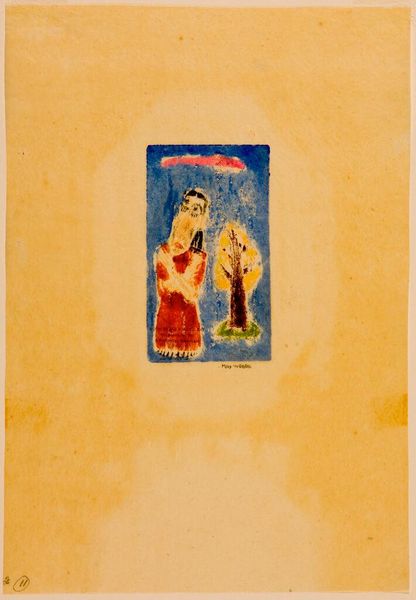
print, relief-print, intaglio, woodcut
#
portrait
# print
#
relief-print
#
intaglio
#
asian-art
#
figuration
#
woodcut
#
portrait drawing
Copyright: National Gallery of Art: CC0 1.0
Curator: This is "Bodhisattva No. 3," a striking print by John Melville Kelly. Its date is, unfortunately, unknown to us. Editor: The first word that comes to mind is "serene". The deep black background makes the figure, adorned in gold, radiate peace. It feels like a whisper rather than a shout, beckoning you to meditate. Curator: Exactly. Kelly was deeply involved in the artistic and spiritual circles in Hawaii during the early to mid-20th century. Woodblock printing had become quite popular, so examining the blend of Western printmaking techniques alongside an embrace of Eastern subject matter really opens up opportunities for a robust cross-cultural dialogue here. Editor: Absolutely. The image embodies a confluence of cultural narratives. Who do we see when we encounter this figure? Is it simply an exercise in cultural tourism, or does the print suggest something more in the history of Western encounters with Asian spirituality? What ideological and power structures are operating, conscious or otherwise, within these depictions? Curator: Those are crucial questions to consider, especially when examining how such imagery has been consumed and sometimes appropriated over time. The public display of artworks like this prompts conversations on representation, authenticity, and the role of art in shaping our understanding of diverse cultures. Editor: Looking more closely at the Bodhisattva’s headdress, rendered so delicately with what seems to be endless floral motifs. What meanings could those layers of floral depictions reveal, either for the artist or within Buddhist visual culture more broadly? Curator: Given what we know of John Melville Kelly, one might conclude his use of floral language is intended to deepen a sense of calm reverence through an understanding of natural, organic symbols from within local Hawaiian culture. Editor: It is powerful to consider how a work so outwardly calm and contained engages us to unpack a layered discussion about the artist, the figure portrayed, the spiritual or artistic source, and our own expectations in front of a piece such as this. Curator: Agreed. Approaching this piece means accepting it as both a beautiful, successful print and a provocation to confront its complex social position as well.
Comments
No comments
Be the first to comment and join the conversation on the ultimate creative platform.
